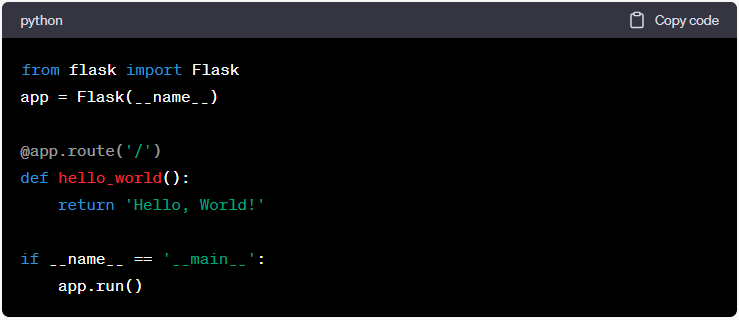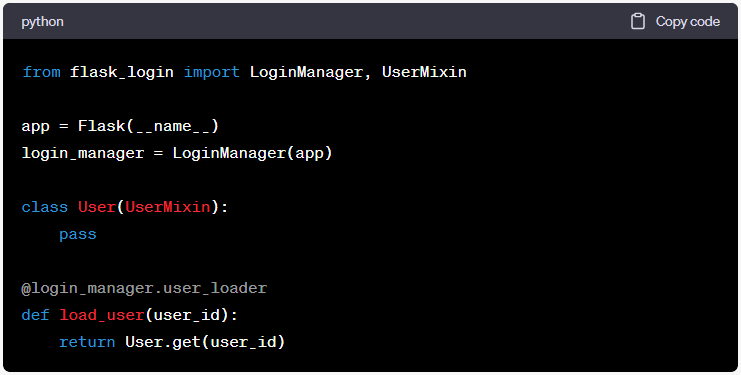The need for effective, scalable, and dynamic web applications is constantly rising in the current digital era. Python is one of the most popular programming languages for creating a wide range of applications because of its simplicity and adaptability. Combining Python with Flask, a small yet effective web framework, makes it a great option for creating online apps quickly and elegantly.
Understanding Flask: A Comprehensive Overview
Often referred to as a micro-framework, Flask provides a flexible yet basic way to create online apps. Because of its simplicity, developers are free to concentrate on the logic of the program rather than being bogged down by the intricate details of the framework. Flask gives developers the flexibility to adjust according to project requirements by providing only the necessities needed to launch an application.
Key Features of Flask:
- Routing: Developers may easily construct endpoints and manage incoming requests by mapping URLs to functions using Flask's routing system.
- Template Engine: The built-in Flask template engine, Jinja2, makes it easier to render dynamic HTML content.
- HTTP Request Handling: Flask simplifies the handling of HTTP requests and makes it simple for developers to implement different request methods (such as GET, POST, etc.).
- Extensibility: Because of its modular architecture, modules for form validation, database management, and other uses can be integrated.
Leveraging Python's Strengths in Web Development
Python is the perfect language for web development because of its succinct syntax and ease of reading. Combining with Flask streamlines the development process and eliminates the need for boilerplate code. Flask's capabilities are further enhanced by Python's vast library ecosystem, which makes it easy for developers to add a variety of functions to their applications.
Example: Creating a Basic Flask Application
Now let's explore a basic example to show you how elegant Flask may be. Think about a Flask "Hello World" application:

When contacted at the root URL, this simple Flask application creates a web server and replies with "Hello, World!"
Flask for Remote Collaboration: Necessity to Hire Remote Developers
Nowadays, working remotely is not a choice but a necessity in the current global environment. Hiring dedicated remote developers gives companies access to a larger pool of talent, which promotes diversity and creativity in development teams. The readability of Python and the simplicity of Flask make it simpler to onboard remote developers, promoting efficient project cooperation.
Example: Remote Collaboration with Flask
Let's look at an example where a group uses version control tools like Git to work together remotely on a Flask project. Flask's well-defined routes and distinct project structures enable remote developers to easily incorporate their code into projects. The brief form of the Flask application makes it easier to comprehend various components, facilitating productive teamwork.
Best Practices for Developing Flask Applications
Following best practices for project organization, security, scalability, and maintainability is necessary to create reliable Flask applications.
1. Project Structure:
A well-organized project structure enhances code readability and maintainability. A typical Flask project structure may resemble the following:

Security Measures:
To avoid typical security risks, Flask applications must incorporate appropriate security features including CSRF protection, route security, and user input validation.
Database Integration:
Flask supports a number of different database systems. Your application can communicate with databases seamlessly if Flask-SQLAlchemy or Flask-MongoEngine are used for database integration.
Example: Implementing Security Measures
Now let's look at putting Flask's Flask-Login extension to use in creating a simple authentication system:

This example shows how to build up a basic Flask-Login user authentication system.
Real-world Examples: Applications Built with Python and Flask
Examining practical applications developed using Flask and Python gives insights into how versatile this combo is.
1. Reddit
Popular social news aggregation and discussion website Reddit began life with Python and later moved some of its codebase to Flask for a variety of features because of Flask's ease of use and simplicity in development.
2. Pinterest
Flask is used in the development of some components of Pinterest, a visual discovery and bookmarking platform. The scalability and flexibility of Flask for various functionalities is advantageous to its microservice design.
Conclusion
Flask and Python make a powerful mix for developing online applications. Developers can efficiently design feature-rich applications because to their synergy. Python's flexibility and Flask's adaptability make them appropriate for a range of project needs. Furthermore, Flask's ease of use and Python's readable nature allow for smooth remote cooperation, which in turn promotes a worldwide developer community.
In conclusion, top software development companies in the USA may embrace the advantages of remote collaboration and build scalable, creative, and dynamic web apps by utilizing the powers of Flask and Python.


No comments yet